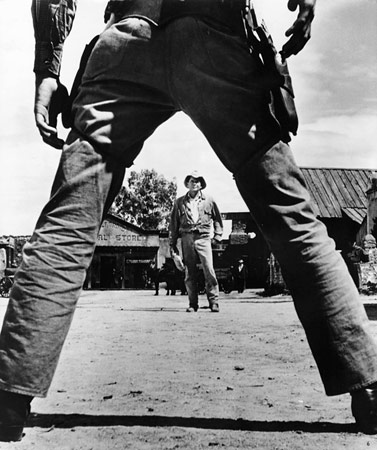You may have come across the terms White and Black Hat SEO, but what do they actually mean? We will explain the difference between the two and show you how to spot dodgy, risky and deceitful SEO techniques.
Short Definition
White Hat and Black Hat SEO are terms for specific methods used in SEO: White Hat SEO refers to the “ethical” side, namely compliance with search engine rules and guidelines. Black Hat SEO is an approach that deliberately violates these guidelines. The terms have their roots in western movies, in which the bad guy would wear a black hat, whereas the hero would don a white one.
Everyone loves a rebel, so let’s have a closer look at our villain first.
Black Hat SEO
Black Hat SEO mainly consists of spamming methods. These can encompass quite an extensive range of techniques, such as link farms, hidden text or – more aggressively – automated link building. The latter has the objective of boosting one’s link popularity through a huge amount of backlinks by using automated software that puts links on as many websites as possible. The automatically generated content is mindless, spammy and usually doesn’t provide any value to users.
(Dis)Advantages
The prospect of gaining a high link popularity in just a short period of time may sound tempting to many web administrators and business owners. Especially since it takes search engines some time to detect and evaluate spam. It’s not surprising, then, that Black Hat SEO has a significant following as it appears to be delivering the desired results. And fast. However, once a search engine’s spam detectors have identified a website as being spammy, the consequences range from ranking penalties to being banned from their index entirely.
Yet, some SEOs and web admins count exactly on this and use black hat methods to move against competitors. In these cases, bad practices are used against competitors’ websites (negative SEO), deliberately kicking them off Google’s index.

Methods
Below are some of the more widely used black hat methods.
Cloaking
When a website uses cloaking, it means that the same URL shows a different page to web crawlers than to human visitors. This aims at improving the site’s ranking in the search results. Search engines can’t see websites like humans do: they primarily process and index text, so a cloaked website will show the search engines’ crawlers a text based and structurally optimised HTML-page. Humans on the other hand will be shown an entirely different page, possibly containing multimedia content (which is difficult to access and index for search engines).
Doorway Page
These kinds of pages exclusively serve the purpose of boosting the site’s rankings. You can’t find any valuable content on doorway pages, only keyword chains. Since these pages have no benefit to the users, they don’t appear in the website structure but can only be found and seen by web crawlers.
Domain Spamming
In this method, a whole domain is basically copied over to another. This creates a mirror site which helps increase visitor numbers.
Blog Spamming
This popular method uses comments to post links and advertisements to one’s own site. These comments don’t provide any value to users or the blog author.
Keyword Stuffing
Keyword Stuffing refers to the creation of content for the sole purpose of reaching a high keyword density. Neither content quality nor the user are taken into consideration, resulting in texts that are difficult to read and viewed negatively by visitors.
Meta Tags Stuffing
Meta tags have the advantage that they’re not immediately visible to a user. Stuffing abuses this by including keywords which may not have much in common with the rest of the page, only high rankings and traffic are the goal.
Tiny Text
As the name suggests, this method uses teeny tiny text for optimised content which may still be visible on the page but literally unreadable for anyone but search engines. Thus, search engines will take this text into consideration when evaluating the website, whereas visitors will often think that it’s a display error.
Invisible Text
Invisible text is, well, invisible. At least to humans. The optimised text will be placed in a part of the page which can only be accessed and seen by web crawlers. Additionally, it’s also not permitted to place text on a page which has the same colour as the background, and is therefore seemingly invisible.
Hidden Links
This type of link is hidden throughout a site in order to increase the number of links. Often a barely visible 1×1 pixel sized image will be used for this. These links may be found on penalised sites and are often related to link farms.
Invisible Area
This part of a page is located in the non-visible area outside a screen and serves to hide specific text from visitors. To make this possible, developers may use CSS such as position:absolute; left:-1000px;
These black hat practices may improve a website’s statistics for a short while, but search engines have long since started to successfully detect spam and they’re improving continually. Black Hat SEO does therefore not only violate guidelines but cannot achieve lasting results.
White Hat SEO

Contrary to the methods above, White Hat SEO abstains from tricks and manipulation against search engines’ guidelines, with the goal of improving rankings and traffic in the long term. The highest priorities are usability and providing value for the user.
The first step in optimising a website is the on-page optimisation. This includes (amongst others) contextual and relevant interlinking of pages, image optimisation, a hierarchically clean URL structure, the creation of meta data and content optimisation.
Additionally, a website should gain links from other websites that are thematically relevant. This is part of the off-page optimisation. It is important to avoid a ‘bad neighbourhood’, referring to websites which have been penalised or even banned from the index. The link profile should be balanced, meaning that it should consist of a variety of high-quality, medium-quality and lower-quality links pointing at relevant pages of the site.
So…
If you decide to let someone else do SEO for you, make sure to enquire what methods will be used and what changes will be done to your website. Your SEO provider should improve the flow and content on your site without using prohibited techniques or even trying to deceive search engines.
So, whose side will you take: White Hat or Black Hat?

